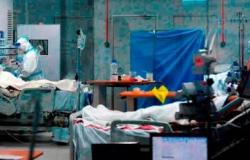
Warning, this is going to be a little bit technical, but I’ll try and keep it simple.
The Reserve Bank’s assistant governor (financial markets) Christopher Kent has delivered a speech at the Sydney office of financial news service Bloomberg about “the future system for monetary policy implementation”.
Let me explain.
We hear a lot about the Reserve Bank’s cash rate, what we don’t always hear is that it’s a target. So the RBA doesn’t dictate a cash rate, but instead uses its key role in the banking system’s financial plumbing to ensure that short-term interest rates sit around its target.
Before the pandemic, the RBA used to do this by increasing or decreasing the availability of reserves it offered banks.
To put it simply, banks have to balance their books at the end of each day to make sure they have enough reserves to meet regulatory requirements. Banks with surplus reserves could park them at the RBA and those who needed more could borrow them.
The RBA would conduct daily “open market operations” to ensure that these balanced out close to the cash rate target.
Christopher Kent labels this a “corridor” system with scarce reserves.
However, during the pandemic when markets were highly volatile, it became too risky to manage interest rates using scarce reserves, because it was too unpredictable from day-to-day what the demand would be and rates could veer too far away from the target.
Combined with all the monetary stimulus the Reserve Bank was injecting through three-year loans to banks and buying government bonds, the RBA moved to a system of excess reserves.
Under this system, the cash rate became very closely anchored to a “floor” set by the rate paid on exchange settlement accounts held by banks at the RBA, which is where they can safely park any excess reserves.
The problem with this, according to Chris Kent, is that it results in the RBA holding a lot of assets and carrying a very large interest rate risk.
So, the RBA is proposing to move to a halfway house, where it offers ample reserves via open market operations close to the cash rate target.
In this system the RBA effectively sets the price of reserves more directly, rather than by manipulating the supply of reserves.
Chris Kent says this should allow the Reserve Bank’s balance sheet — the amount of assets it holds and liabilities it owes — to shrink somewhat, while still leaving plenty of reserves in the banking system to account for volatility.
Tags: Live updates ASX tipped open slightly higher records strongerthanexpected manufacturing activity





